Thingiverse

Five screw-puzzles by George Hart by GeorgeHart
by Thingiverse
Last crawled date: 3 years ago
These five puzzles challenge anyone who plays with them to think about combining the geometric transformations of translation and rotation in new ways. In a math class, they also provide inspiration to see that mathematics has fun and creative applications. Furthermore, they get progressively more challenging and so lead students to be comfortable with the important skill of exploring new problems that they have no idea how to solve. The five as a set will lead students to think about problem-solving strategies and provides a healthy "Aha!" when the solution to the last one is found, giving a feeling of enjoyment of mathematics.
Two-part bagel. This is trivial to solve, but calling it a "bagel" naturally leads the user to the next challenge of trying to understand the geometric form so they can reproduce it by cutting a real bagel in the same manner.
Four-part torus. Conveniently, you can never lose a piece, as every pair is linked. Slightly harder to solve. One approach is to put together two pieces and two pieces so it reduces by a divide-and-conquor approach to the easier two-part bagel. Or you can solve it one piece at a time. If you master this shape, you can also replicate it by cutting a real bagel.
Six-part torus. The next logical step. Advanced students will enjoy the challenge of proving that the six parts can be assembled in any sequence, e.g., if you label them when solved as ABCDEF you can also solve them as ABEDCF or any other permutation.
Four-part cube. These four identical parts assemble into a cube without any force required. It can be solved in an incremental manner, by adding one piece at a time, or a divide-and-conquor approach of first making two sub-assemblies that join.
Two part tetrahedron. Although there are only two pieces and they are identical, this is the most challenging of these five puzzles. Again, no force is required. It is OK if it takes you more than a half hour to solve it.
Two-part bagel. This is trivial to solve, but calling it a "bagel" naturally leads the user to the next challenge of trying to understand the geometric form so they can reproduce it by cutting a real bagel in the same manner.
Four-part torus. Conveniently, you can never lose a piece, as every pair is linked. Slightly harder to solve. One approach is to put together two pieces and two pieces so it reduces by a divide-and-conquor approach to the easier two-part bagel. Or you can solve it one piece at a time. If you master this shape, you can also replicate it by cutting a real bagel.
Six-part torus. The next logical step. Advanced students will enjoy the challenge of proving that the six parts can be assembled in any sequence, e.g., if you label them when solved as ABCDEF you can also solve them as ABEDCF or any other permutation.
Four-part cube. These four identical parts assemble into a cube without any force required. It can be solved in an incremental manner, by adding one piece at a time, or a divide-and-conquor approach of first making two sub-assemblies that join.
Two part tetrahedron. Although there are only two pieces and they are identical, this is the most challenging of these five puzzles. Again, no force is required. It is OK if it takes you more than a half hour to solve it.
Similar models
cg_trader
$3

Flowerpot 4 pieces solved puzzle | 3D
...e pieces. from them, you can make a solved puzzle. the file contains a model of a single pot. it is identical for all four parts.
3d_export
$8

screw puzzle
...and provides a healthy "aha!" when the solution to the last one is found, giving a feeling of enjoyment of mathematics.
thingiverse
free

3 Piece Cubic Puzzle by UMF3D
...it is unique in both the sense that all of the pieces are different and that the sequence for assembly uses different techniques.
cults
free

Cube to mount - cube making - puzzle
....
care for deburring.
it is a kind of "meccano" one can increase the number of pieces to make big assemblies.
a +
nop21
thingiverse
free

Modified 6 piece star puzzle by cyborg5
...r 3d.
visit my blog at http://tech.cyborg5.com/?p=1027 for details on how to assemble if you can't figure it out on your own.
thingiverse
free

Octahedron Coordinate Motion Puzzle by asteed
...cks with four others. getting five together is easy (see 3rd image above), but getting the last in is a challenge (see 4th image)
thingiverse
free

Ten Billion Barrel Puzzle by C3dke
... columns, with the three black balls filling up the top of the longer columns.
[source: wikipedia & jaap's puzzle page)
thingiverse
free

Hexagon into Square Puzzle by pmoews
...nto first a square and then a hexagon. two trays, one square and one hexagonal, are included as aids and storage for the pieces.
thingiverse
free

21 Cube Dissection Puzzles by pmoews
... puzzle with all different pieces choose the pair pieces_1_and_2.stl and the pair pieces_3_and_4.stl. openscad code is included.
cg_trader
$15

Domino Tower | 3D
...u need to 3d-print this model four times for a complete puzzle. domino tower puzzle interlocking mechanical games toys games toys
Hart
turbosquid
$100

Hawker Hart
... available on turbo squid, the world's leading provider of digital 3d models for visualization, films, television, and games.
turbosquid
$100

Hawker Hart
... available on turbo squid, the world's leading provider of digital 3d models for visualization, films, television, and games.
turbosquid
$100

Hawker Hart
... available on turbo squid, the world's leading provider of digital 3d models for visualization, films, television, and games.
turbosquid
free

hart diamon
... available on turbo squid, the world's leading provider of digital 3d models for visualization, films, television, and games.
turbosquid
$34

Hart Charm
...rt charm for download as blend, blend, dae, fbx, obj, and stl on turbosquid: 3d models for games, architecture, videos. (1711326)
turbosquid
$10

Racing Hart wheel
... available on turbo squid, the world's leading provider of digital 3d models for visualization, films, television, and games.
turbosquid
$1
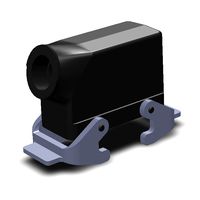
Harting Hood 193001601531
... available on turbo squid, the world's leading provider of digital 3d models for visualization, films, television, and games.
turbosquid
$1

Harting Hood 19300160730
... available on turbo squid, the world's leading provider of digital 3d models for visualization, films, television, and games.
3d_export
$60

kevin hart 3d zbrush sculpting
...kevin hart 3d zbrush sculpting
3dexport
kevin hart 3d zbrush sculpting
turbosquid
$15

Hart Nine Light Chandelier
... free 3d model hart nine light chandelier for download as max on turbosquid: 3d models for games, architecture, videos. (1660097)
George
design_connected
$16

George
...george
designconnected
walter knoll george computer generated 3d model. designed by eoos.
3ddd
$1

Georges
... angelo cappellini
стул georges фабрики angelo cappellinihttp://www.operacontemporary.com/
turbosquid
$10

George
... available on turbo squid, the world's leading provider of digital 3d models for visualization, films, television, and games.
3ddd
$1

George Sofa
...e , beb
george sofa by b&b; italy.
дизайнер: antonio citterio
материалы vray, corona
3ddd
$1

Cantori, George
...cantori, george
3ddd
cantori
неплохой диван + стол ит. фабрики cantori, коллекция george
design_connected
$16

George Lounge
...george lounge
designconnected
walter knoll george lounge computer generated 3d model. designed by eoos.
3ddd
$1

Cantori / George
...cantori / george
3ddd
cantori
неплохой стол + стул ит. фабрики cantori, коллекции george + raffaello
3ddd
$1

George Floor Lamp
...george floor lamp
3ddd
george
http://www.stylecraft.com.au/product/george-floor-lamp
3ddd
$1

Cantori, George
...dd
cantori , комод
неплохой комод + зеркало ит. фабрики cantori, колекции: george + aida
3ddd
$1

Cantori / George
...
cantori , консоль
неплохая консоль + дек. панель, ит. фабрики cantori, коллекция george
Puzzles
3d_ocean
$5

Puzzle
... can rotate, move or delete them easily. to change the puzzle image just replace the ‘puzzle_texture.jpg’ in the textures folder.
archibase_planet
free
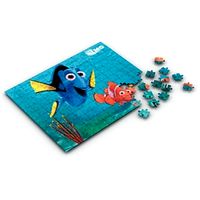
Puzzle
...puzzle
archibase planet
puzzle toy enigma
puzzle n240111 - 3d model (*.gsm+*.3ds) for interior 3d visualization.
3d_export
$10

puzzle
...puzzle
3dexport
this puzzle model consists of separate parts. suitable for 3d printing and further play.
3ddd
$1

pillow-puzzle
... пазлы , пазл , подушка
pillow-puzzle
3ddd
$1

Porada Puzzle
... журнальный , кофейный
стол журнальный porada puzzle 1000х500
3ddd
$1

Puzzle sofa
...puzzle sofa
3ddd
модульный
puzzle sofa
turbosquid
$35

Puzzle
...uid
royalty free 3d model puzzle for download as 3ds and max on turbosquid: 3d models for games, architecture, videos. (1300379)
turbosquid
free

puzzle pegboard with square and triangle puzzle
... pegboard with square and triangle puzzle for download as max on turbosquid: 3d models for games, architecture, videos. (1634635)
3d_ocean
$4
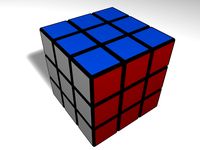
Puzzle Cube
...puzzle cube
3docean
clean cube fun puzzle rubik simple toy
this is a very clean and simple puzzle cube.
turbosquid
$19

puzzle
...oyalty free 3d model puzzle for download as max, obj, and fbx on turbosquid: 3d models for games, architecture, videos. (1363319)
Five
3ddd
free

Five candlestick
...five candlestick
3ddd
подсвечник
five candlestick is candlestick silver material.
design_connected
$13
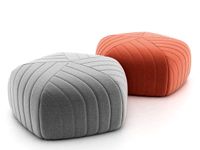
Five Pouf
...five pouf
designconnected
muuto five pouf computer generated 3d model. designed by anderssen & voll.
3d_ocean
$15

Five-Seven
...seven calibre 5.7×28mm pistol lowpoly game ready model 4949 triangles – 2746 vertices animatable 3d model 4096/2048/1024 textures
turbosquid
$40

Five Houses
... available on turbo squid, the world's leading provider of digital 3d models for visualization, films, television, and games.
turbosquid
$15
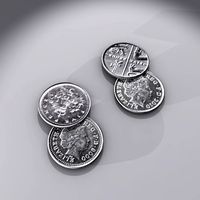
five pence
... available on turbo squid, the world's leading provider of digital 3d models for visualization, films, television, and games.
turbosquid
$5

Five Barrels
... available on turbo squid, the world's leading provider of digital 3d models for visualization, films, television, and games.
design_connected
$13

Five Seahorse Sculpture
...five seahorse sculpture
designconnected
five seahorse sculpture computer generated 3d model.
design_connected
free

Five Floor Lamp
...five floor lamp
designconnected
free 3d model of five floor lamp by new works designed by graulich, gaspard.
turbosquid
$8

FN Five-Seven
...quid
royalty free 3d model fn five-seven for download as obj on turbosquid: 3d models for games, architecture, videos. (1231634)
turbosquid
$5

Number Five 5
...quid
royalty free 3d model number five 5 for download as max on turbosquid: 3d models for games, architecture, videos. (1409297)
Screw
3d_export
$5
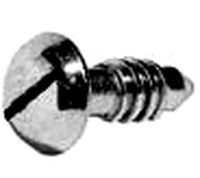
screw
...screw
3dexport
screw
turbosquid
$29

Screw driver and screws
... available on turbo squid, the world's leading provider of digital 3d models for visualization, films, television, and games.
3d_ocean
$2
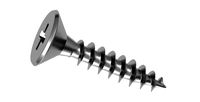
Screw
... steel twist wood screw
screw 3d model in 2 different materials real world scale rendered with mental ray file formats: .max .obj
3d_ocean
$4

Screw
...n
3d bolt male mechanic metal nut parts prop propeller schraube schraubenmutter screw steel twist
screw 3d model, clean modeling.
turbosquid
$2
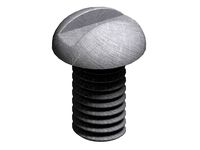
screw
...crew
turbosquid
royalty free 3d model screw for download as on turbosquid: 3d models for games, architecture, videos. (1198271)
turbosquid
free
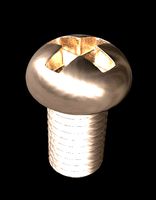
Screw
...screw
turbosquid
free 3d model screw for download as obj on turbosquid: 3d models for games, architecture, videos. (1240851)
3d_ocean
$2
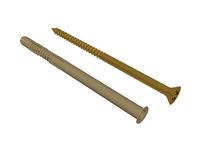
Frame Screw
...frame screw
3docean
construction screw
a frame screw and plug.
turbosquid
$27

screw
...w
turbosquid
royalty free 3d model screw for download as max on turbosquid: 3d models for games, architecture, videos. (1334064)
turbosquid
$20

SCREW
...
turbosquid
royalty free 3d model screw for download as sldas on turbosquid: 3d models for games, architecture, videos. (729733)
turbosquid
$1
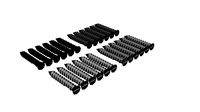
Screws
...
turbosquid
royalty free 3d model screws for download as max on turbosquid: 3d models for games, architecture, videos. (1640360)
